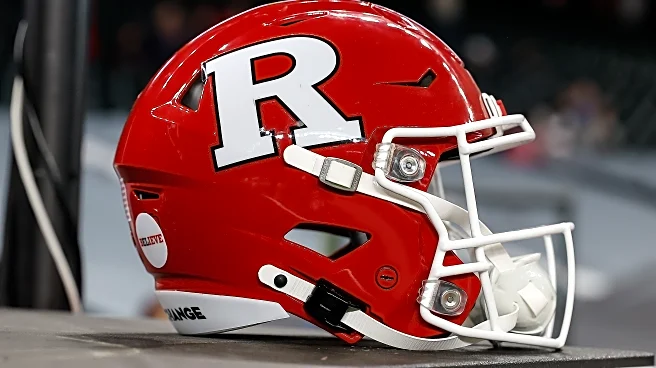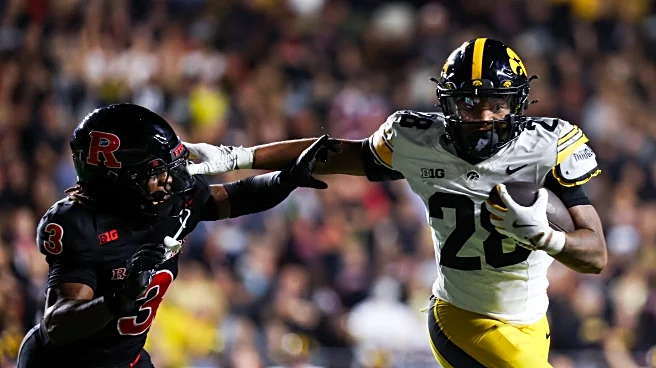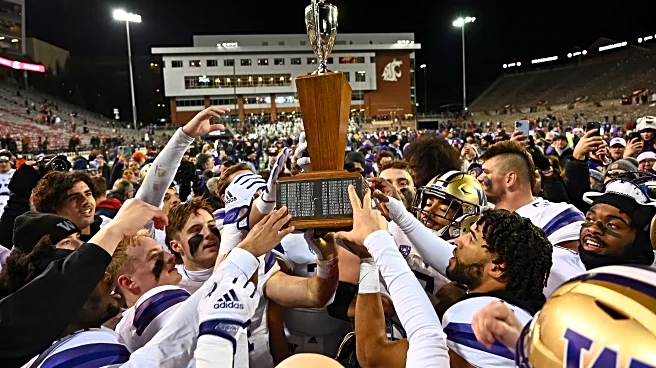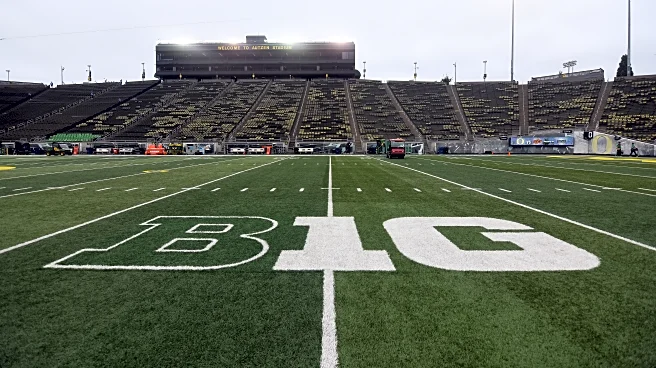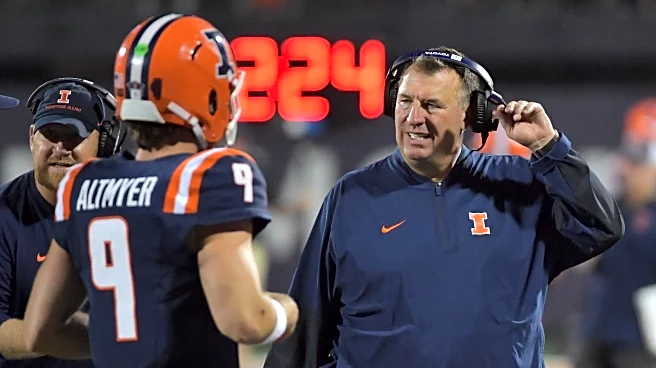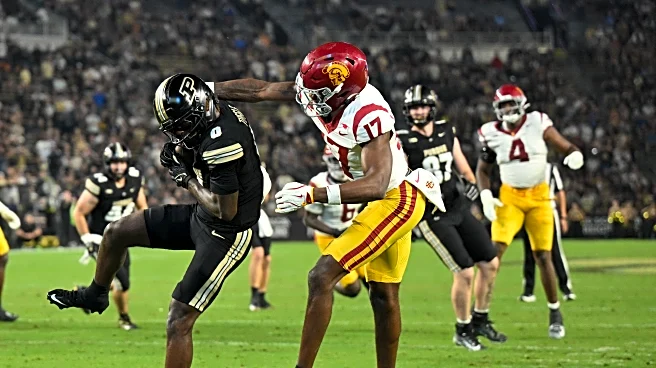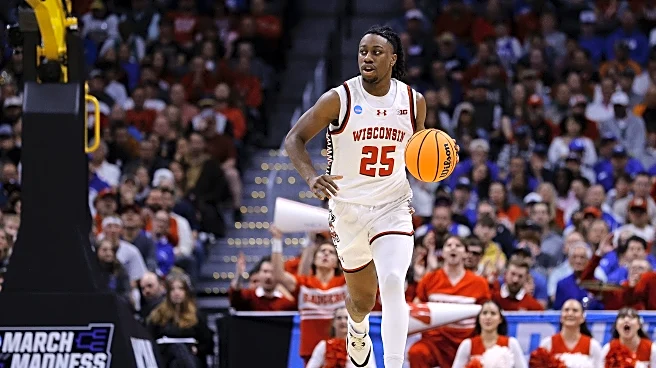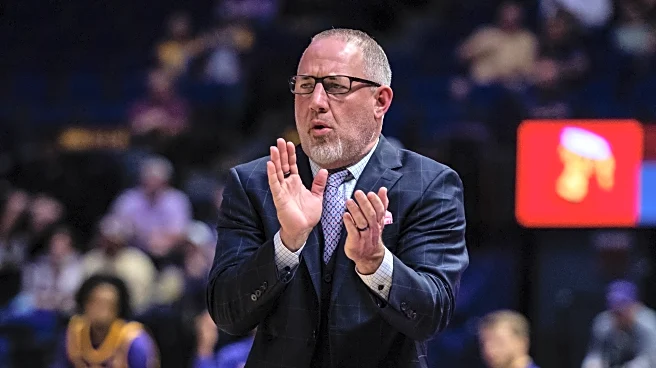Leading up to the highly anticipated blackout game against Iowa, the atmosphere on campus felt different. There was a record-setting crowd of 55,942 in attendance, a “Light Up the Knight” pregame light show, special glow-in-the-dark performances from the marching band and dance team, and fireworks on and off the field. The entertainment, the students, and the fans, which included a sizeable Iowa contingent, did their part to show out for the big game at SHI Stadium. It was still not enough for Rutgers
to get their first win over the Hawkeyes.
Unlike the last few matchups against the Hawkeyes, the Scarlet Knights were potent on offense, were able to move the ball, and scored 28 points. But the result was the same: a disheartening loss to Iowa that brings back questions of whether Rutgers can truly be a contender or upper-tier team in the Big Ten. Greg Schiano said that “we didn’t deserve to win the game” in his post-game press conference, and he was certainly right. Here are my takeaways from the game.
Offense Proves Its Worth Against A Top Defense
After Rutgers averaged over 46 points per game in its first three matchups and Kaliakmanis entered tonight’s contest with the highest PFF grade, there was a strong belief that this offense would be able to continue their strong showing in the Big Ten, even against stronger defenses. That belief was proved right against a notoriously tough Iowa defense that ranks near the top of the country.
Athan Kaliakmanis and the Scarlet Knights’ offense came out of the gate firing, with Kaliakmanis leading touchdown drives on each of Rutgers’ opening three possessions. He completed 12 of 14 passes to start the game, including multiple passes of over 35 yards, with Rutgers and Iowa trading touchdowns in the first half. Kaliakmanis also scored two touchdowns on the ground, including a quarterback keeper where he went around the edge, and a Tush Push touchdown that Rutgers converted on its third attempt.
Ian Strong had a career-best performance of 151 yards on eight receptions, with a long of 43 yards and a fourth-quarter drive in which he caught three straight passes for ten or more yards for the Scarlet Knights. KJ Duff had 92 yards on seven catches, including a long of 24 yards, while DT Sheffield had three catches for 51 yards, including a 40-yard bomb down the sideline that set up Rutgers for its first touchdown of the game.
The running game was more limited, but Antwan Raymond picked up several first downs using his legs and scored two touchdowns, with 18 carries for 62 yards. Ja’Shon Benjamin was limited to two carries for four yards, with the Iowa defense stuffing the run and limiting explosive plays on the ground. With CJ Campbell being announced as out for the season during Schiano’s postgame press conference, Raymond and Benjamin will become the starting running back duo for the remainder of the season.
Although Kaliakmanis threw a pivotal interception as he was hit by Hawkeye defenders collapsing in on him, the Scarlet Knights’ offense proved to be legitimate against one of the top defenses in the country. They moved the football at will through the air for large portions of the game, while supplementing it with a ground game that could pick up the short yardage. It will be exciting to see how the offense can lead this team through their Big Ten schedule for the rest of the season.
Defense Continues To Be An Issue Despite Some Improvement
If you were to tell me that Rutgers would score 28 points against Iowa and allow 38 points, I would not have believed you. Yet that is exactly what happened. Between poor tackling angles, open spots in coverage, and a defense that could not stop a run coming from anywhere, the Iowa offense hummed most of the night, which was stunning to see given their reputation on that side of the ball.
The run defense continued to be porous, allowing 4.9 yards per carry to Kamari Moulton and 6.2 yards per carry to Jaziun Patterson. On a night where Iowa was without its leading rusher through three games in Xavier Williams, it did not matter. Quarterback Mark Gronowski had 13 carries for 55 yards and three rushing touchdowns on the evening, while both he and the top three running backs had a carry of 10 or more yards.
In the pass game, the Hawkeyes experimented with deep shots on their first drive, not connecting but coming surprisingly close. This came back to bite the Scarlet Knights later on, with Gronowski hitting Dayton Howard for a 42-yard pass that set up a critical touchdown for the Hawkeyes that gave them the 31-28 lead.
That was not the only time an Iowa pass-catcher got wide open or made a big play, with receiver Sam Williams catching a 25-yard pass while tight ends Zach Ortwerth and DJ Vonnahme each caught passes that resulted in 20-plus yard gains. Hawkeyes receivers and tight ends often found ample room to run after the catch, with defensive lapses in coverage keeping the chains moving on drives throughout the game.
On the other hand, the defense had stretches of time where they showed Big Ten potential, forcing a three-and-out on Iowa’s first offensive possession of the game, as well as on the second drive of the second half. During that drive, Eric O’Neill got home on Gronowski for a big sack with the Hawkeyes deep in their own territory, which saw the crowd reach a fever pitch at SHI Stadium.
O’Neill had by far his best game as a Scarlet Knight so far, with four tackles, including three solo, two for loss, and the sack, while Cam Miller came up from the secondary to record a sack and TFL of his own. However, in the most crucial moments, the defense fell short, with a crucial holding penalty on Al-Shadee Salaam keeping the Hawkeye offense on the field instead of Rutgers getting the ball back up by four points in the fourth quarter. Iowa proceeded to score a touchdown, followed by the game-sealing score following the Kaliakmanis interception.
Special Teams Miscues And Penalties Doom Rutgers
After Rutgers had three strong games on special teams, the third phase of the game was another big reason why the Scarlet Knights fell to the Hawkeyes last night. Starting from the opening kickoff of the game, Kaden Wetjen ran from end zone to end zone nearly untouched to give Iowa a 7-0 lead before either offense had taken the field.
Jai Patel also saw his record field goal makes streak snapped with a couple of misses. Patel had initially made a 32-yard field goal, but a false start from right guard Kobe Asamoah pushed Rutgers five yards back. Patel hit the ensuing 37-yard attempt off the right upright, which sent Rutgers off the field empty-handed with the game knotted at 21 in the second quarter.
After both offenses went up and down the field, the missed field goal marked a change in the flow of the game, with neither side scoring again until the fourth quarter. Both defenses settled in and forced punts, while Iowa’s Drew Stevens missed a 40-yard field goal of his own. Late in the third quarter, Iowa stalled a promising Rutgers drive, which set up a 29-yard field goal attempt. However, Ethan Hurkett blocked Patel’s kick, keeping the game at 21 apiece heading into the fourth quarter.
With two blocked extra points against Norfolk State, something seemed off about a usually fluid kicking team for Rutgers. The biggest concern was how much Iowa’s blocking unit was able to lean on the Scarlet Knights, winning the line of scrimmage to the point that multiple defenders, including Hurkett, were able to get their hands up close enough to Patel’s kick, which came off the ground at a low angle compared to Stevens’ sky-high attempts.
With Jai Patel typically being very reliable, it is imperative that kicks do not get blocked because of poor kick blocking, especially on a team that emphasizes special teams as much as the Scarlet Knights do. Allowing a kickoff touchdown on the opening play of the game is even more inexcusable, and having penalties that swing the balance of the contest on multiple occasions is the most inexcusable of them all.
Between Jett Elad picking up a personal foul on a late hit, Bo Mascoe getting called for a defensive hold that set Iowa up in the red zone, the false start on the field goal try, and worst of all, the holding call on Salaam, which gave all the momentum to the Hawkeyes, the penalties came at the worst time for the Scarlet Knights and doomed them from what would have been a memorable victory over a strong Iowa team that has had Rutgers’ number since RU joined the Big Ten Conference.
The Amount Of Injuries Are Concerning
To those in attendance, it felt like there was an injury timeout about every five plays, particularly on the defense. Rutgers has already lost several players for the season, including Ryder Langsdale, Doug Blue-Eli, Dantae Chinn, and, most recently, CJ Campbell, while starting linebacker Moses Walker went down with a noncontact injury as he attempted to rush Gronowski around the edge. Colin Weber left the game in the third quarter and did not return, being replaced by Logan Blake.
Although injuries are much more frequent in football due to the nature of the sport, the Scarlet Knights are getting injured at a concerning rate. With the change in Rutgers’ strength and conditioning coach, it is fair to question if something is off with the way the team is practicing that is resulting in all of these injuries. Tyler Needham also left the game with an injury after being questionable going into the contest, which may have affected Rutgers’ ability to protect Kaliakmanis from Iowa’s ferocious defensive line.
Injuries, especially on the defensive side of the ball, were a big reason why last year’s season got derailed after a 4-0 start, and it appears that Rutgers may be heading down a similar path this year if it cannot slow down the rate at which they are occurring. This has been a concerning trend not only for this game, but in each of the three previous ones as well, and it is something that needs to be fixed as Rutgers heads into the meat and potatoes of its Big Ten schedule.
Program Perception And Bowl Eligibility Concerns
Leading up to the game and especially in the aftermath, a lot has been made about how this loss to Iowa stamps Rutgers’ standing as a lower-tier member of the Big Ten and how they have failed to earn a signature win in the Greg Schiano 2.0 era. While Iowa is certainly a quality team, I question why that game seems to be judged more than any other when it comes to these things.
I would argue that the road win over Virginia Tech and certainly the home win over Washington last season should be seen as signature wins of some form, while on the other hand, if the Scarlet Knights really want to use another team as a measuring stick for where they are and what they can become, it should not be a Hawkeyes team that is essentially a better version of themselves, with a high ceiling and a low floor.
I understand that Greg Schiano has a lot of respect for Kirk Ferentz and the program Iowa has built, and I do as well, but to single this game out each time we play Iowa as to why Rutgers cannot compete on a high level in the Big Ten, as opposed to any other team on the schedule, seems unfair. An already enormous game for the coaches, players, and fans alike should not carry even more weight, stress, and ultimately despair, just because Rutgers fell to a well-established, consistent, but ultimately underachieving Hawkeyes team that typically carries many of the same flaws that the Scarlet Knights have had, especially when playing superior opponents.
That being said, Rutgers football missed out on a chance to change that narrative and earn that signature conference victory over an upper-tier opponent, although for the first time since the first meeting between the programs, it did feel like the Scarlet Knights at the very least belonged on the same field as Iowa. Not only did Rutgers compete, but they also led a back-and-forth affair for large portions of the game, and had a chance to win in the fourth quarter. If Iowa is going to be seen as the benchmark for Big Ten success, then the Scarlet Knights should gain respect for their performance against the Hawkeyes, both locally and nationally.
The much more important issue is where Rutgers stands when it comes to bowl eligibility. In this crucial stretch of early conference play, RU dropped their first opportunity to improve to four wins. Two more opportunities await, with a beatable Minnesota team preceding a Washington team that looks much-improved from last season. Although another win is certainly possible, it will be very improbable for Rutgers to beat any of its ranked opponents this year.
The margin of error for Rutgers has become zero with the loss to Iowa, with the Scarlet Knights needing to win out against Minnesota, Purdue, and Maryland to have a realistic shot at six wins and bowl eligibility. After competing toe-to-toe with Iowa for a large portion of the game, Rutgers must clean up on mistakes and head into the next couple of games with the intention to win.

